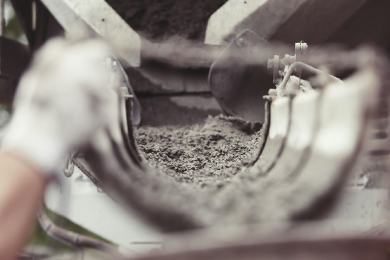At Green Building Design (GBD), we fully support the UK Green Building Council’s recently published Climate Resilience Roadmap. It’s a landmark document that doesn’t just offer a strategy but delivers a stark warning.
Climate change is no longer a future scenario. It is already reshaping our built environment through rising temperatures, flooding, extreme storms and growing water scarcity. Without immediate and coordinated action, these impacts will intensify - threatening lives and damaging infrastructure.
A Built Environment Under Strain
The Roadmap identifies five major climate hazards facing the UK: flooding, overheating, storms, drought and wildfires. And the evidence is hard to ignore.
Today, 6.3 million properties in England are already at risk of flooding—a figure expected to rise to 8 million by 2050, or one in every four homes. Over half of UK homes are at risk of overheating, and the same vulnerabilities extend to care homes, schools, hospitals and workplaces. In 2022 alone, over 3,200 heat-related deaths were recorded, and unless adaptation becomes a core part of building design and management, heat-related mortality could triple by mid-century, reaching over 7,000 deaths per year.
What’s more, these risks are not isolated. They interact - flooding worsened by storms, heatwaves intensified by drought - creating cascading threats that challenge every part of our built environment.
The Time to Adapt is Now
While reducing emissions remains essential, the UKGBC makes one point crystal clear: there is no climate resilience without a climate-resilient built environment.
Adaptation must now be treated with the same urgency as decarbonisation.
The Roadmap provides a practical, four-stage framework for integrating resilience across policy and practice. Yet, it also highlights persistent barriers such as fragmented responsibilities, inconsistent metrics, limited funding, and a lack of cohesive national leadership.
What’s needed now is not just ambition, but implementation.
Turning Vision into Action
At GBD, climate resilience is already embedded in everything we do. Our engineering and design approach puts long-term performance, energy efficiency, and risk reduction at the heart of every project.
We design buildings to be cooler in summer, warmer in winter and less reliant on mechanical systems, using passive design features such as solar shading, thermal mass and natural ventilation.
We develop future-ready energy strategies, integrating heat pumps, solar PV, and intelligent building controls that lower energy use and adapt to changing demand.
We incorporate flood resilience and water-sensitive design into feasibility and planning stages, and we commit to ensuring buildings operate as intended long after handover. Because a low-carbon, climate-resilient building isn’t a model - it’s something that performs, year after year.
National Responsibility, Local Opportunity
The UKGBC’s Roadmap offers a national blueprint, but also as an urgent call for local action. Many of its headline policy proposals align with what we at GBD have long advocated for:
- A legally binding requirement for climate adaptation in planning decisions.
- A new Future Homes and Buildings Standard by 2028 that accounts for overheating and flooding.
- A comprehensive national retrofit strategy to upgrade older building stock.
- Investment in green infrastructure like trees, parks and ponds, that provides community-level cooling and flood mitigation.
- Greater support for local authorities and planning departments, who are on the front line of delivering resilient design.
At GBD, we echo these priorities and advocate for their implementation in practice. Many of the communities we work with, particularly urban and peri-urban sites, face disproportionate climate risk, and it is here that innovative, adaptive design will be most critical.
A Shared Responsibility for a Safer Future
The final message from the UKGBC is unequivocal: acting now is not just cheaper—it’s the only responsible choice. Resilience must be embedded from the outset, in every planning application, design specification, and procurement decision. It cannot be a bolt-on or a nice-to-have.
At Green Building Design, we are proud to be part of the solution. Our work helps clients futureproof their buildings, reduce their emissions, and prepare for a more uncertain climate. But we know this isn’t a job for one company alone. It will take cross-sector collaboration, informed leadership, shared responsibility and a sector-wide shift in mindset.
Because a climate-resilient future doesn’t happen by accident. It happens by design.
To find out how Green Building Design can support your next project with practical, cost-effective climate resilience, get in touch today.





.png)




